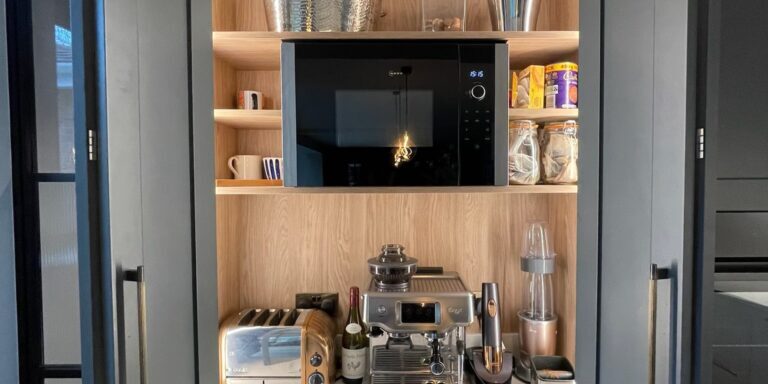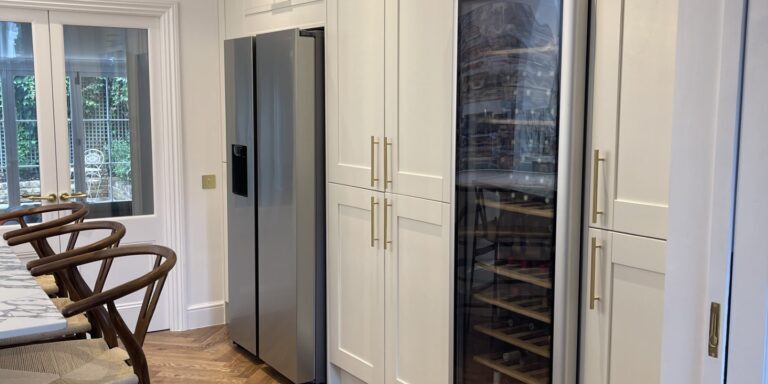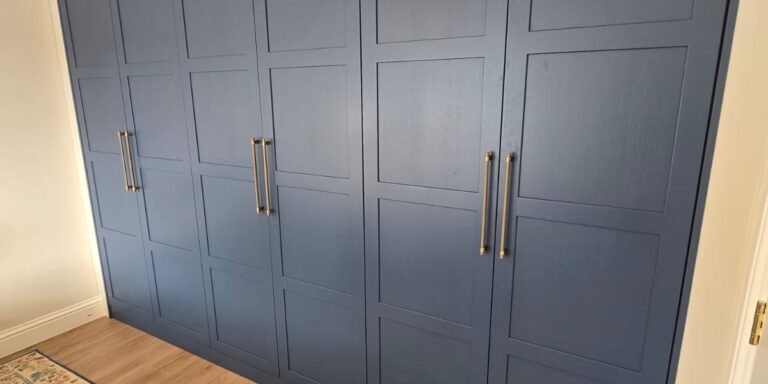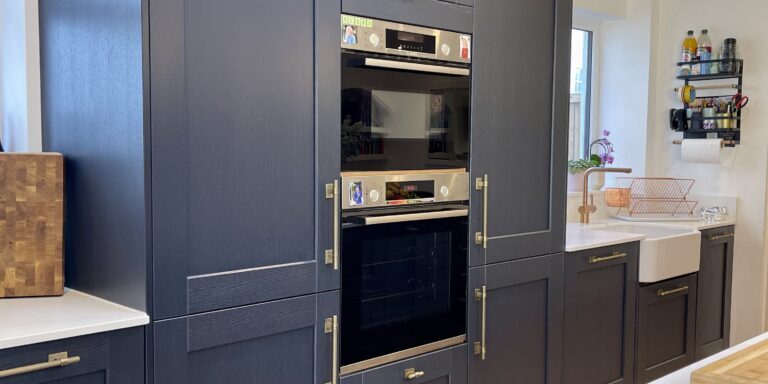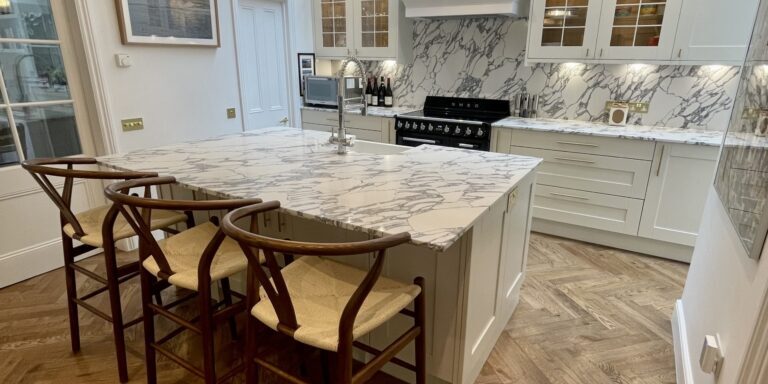The Importance of Good Lighting in Kitchen Design
Lighting can completely transform the atmosphere and usability of a kitchen. It’s not just about brightness — it’s about creating the right balance between function and ambience. A well-lit kitchen is safer, more welcoming, and showcases the design features that make your space unique.
Modern kitchen lighting design focuses on layering different light sources to ensure every task and zone has the right illumination. Whether you’re preparing food, dining, or entertaining, the perfect lighting setup can make your kitchen work beautifully day and night.

Understanding Layered Lighting
The most successful kitchens use a layered lighting plan made up of three key types:
Task Lighting: The most practical layer — lighting that allows you to see clearly when preparing food or cooking. Think under-cabinet LED strips, recessed downlights, or spotlights above key work areas like the hob and sink.
Ambient Lighting: Creates general illumination, setting the mood of the room. Ceiling fixtures or recessed lighting provide an even spread across the space. For open-plan kitchens, adjustable dimmers let you move seamlessly from bright mornings to relaxed evenings.
Accent Lighting: Highlights design details such as pendant lighting over an island or plinth LEDs at floor level. It’s the creative layer that gives your kitchen personality.
Lighting for Open-Plan Kitchens
Open-plan living requires thoughtful lighting to define different zones. Use pendant lights to mark dining areas, brighter downlights for food prep, and subtle wall or floor lights to frame the lounge area. Smart lighting systems like Philips Hue or Lutron allow you to control colour temperature and brightness via app or voice — ideal for multifunctional spaces.

Energy-Efficient & Smart Kitchen Lighting
Switching to LED kitchen lights is one of the simplest ways to reduce energy costs while maintaining style. LEDs last up to 25 times longer than halogen bulbs and use significantly less energy.
Smart kitchen lighting adds convenience. Schedule lights to dim automatically in the evening or link them with motion sensors for instant illumination when entering the room. Smart bulbs also allow colour control — crisp white for cooking, warm amber for dining — helping you set the mood instantly.
Choosing the Right Fixtures
• Ceiling spotlights: even coverage with a minimalist finish.
• Pendant lights: ideal for islands or breakfast bars.
• Wall lights: soften light and balance the room.
• Under-cabinet lights: essential for shadow-free prep areas.
• LED strips: great for plinths or open shelving.
When selecting fixtures, consider scale and symmetry. Three evenly spaced pendants typically suit kitchen islands best.

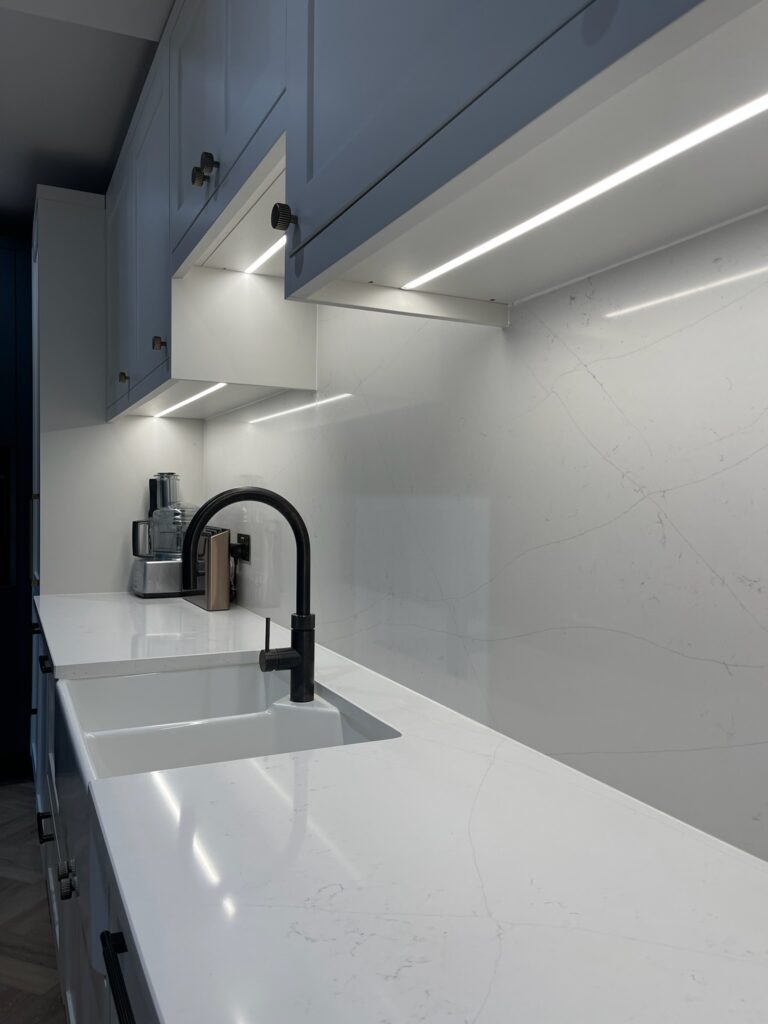
Kitchen Lighting Trends for 2025
1. Warm white LEDs for a natural, comfortable glow.
2. Statement pendants in brushed brass or matte black.
3. Linear recessed lighting within ceilings or shelving.
4. Smart dimming for energy efficiency and ambience.
5. Integrated lighting in cabinetry for a sleek, luxury feel.
Creating Mood Through Light
Your kitchen isn’t just a workspace — it’s where family life unfolds. Lighting helps define these moments. Use dimmers and smart controls to shift from bright and functional to soft and relaxing. Cooler tones suit daytime energy, while warmer tones make evenings feel inviting.
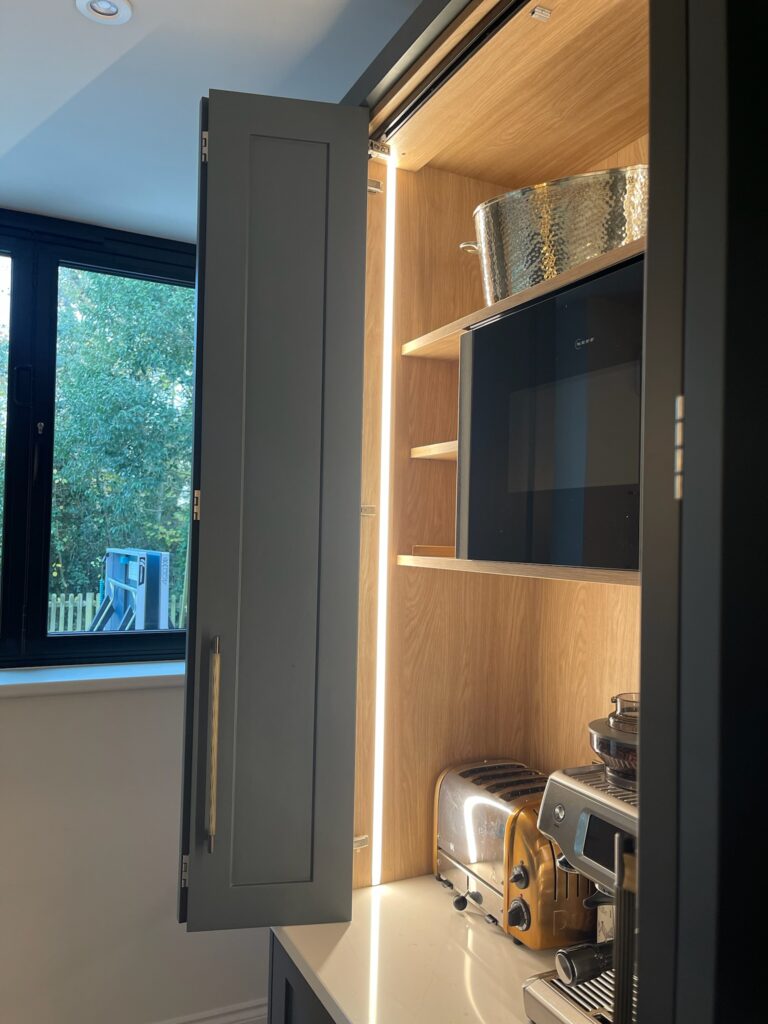
Final Thoughts
Lighting is the final design detail that makes a kitchen complete. By layering ambient, task, and accent light, you can craft a space that’s both stylish and functional. From subtle LED strips to statement pendants, each element plays its part in shaping the personality of your kitchen.
The best kitchen lighting design adapts to your lifestyle — bright when you need it, calm when you unwind, and always effortlessly elegant.
Discover More
Looking to transform your home? Let us know!




